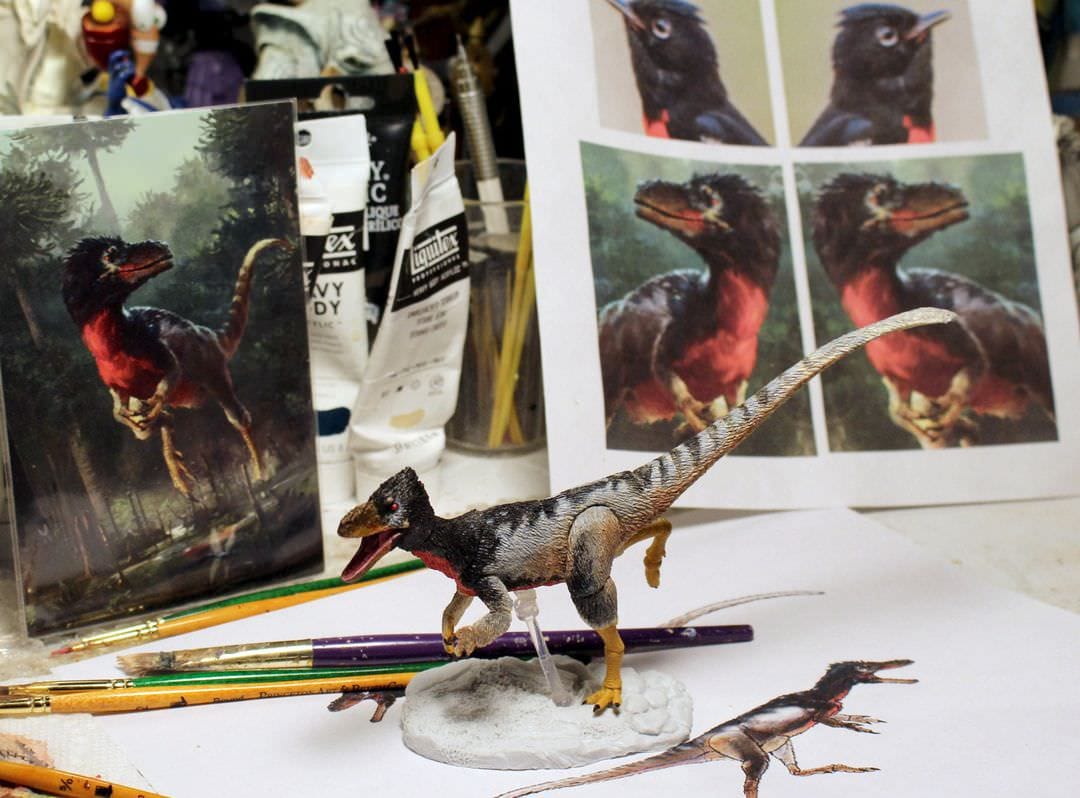Moros Intrepidus: The Tiny Terror That Hinted at Tyrannosaurus Rex’s Rise
Get ready to meet *Moros intrepidus*, a tiny dinosaur that lived long before the mighty *T. Rex*. It was about the size of a big dog but don’t let its size fool you. This little guy was a fierce predator that likely helped shape the evolution of the mighty *T. Rex*. Get ready to explore the world of *Moros intrepidus* and discover its secrets.
Unveiling the Tiny Terror: A Glimpse into T. Rex‘s Past
We all know Tyrannosaurus Rex, the king of the dinosaurs – massive, powerful, and terrifying. But have you ever wondered where these giants came from? Their story doesn’t start with a roar, but with a whisper, in the form of a much smaller ancestor – Moros intrepidus.
Don’t let the name fool you, though. While “Moros intrepidus” might sound like a fearsome monster, it was actually a relatively small dinosaur, about the size of a deer. This little guy lived around 96 million years ago, long before T. Rex stomped onto the scene.
Finding Moros intrepidus was a huge deal for paleontologists. Before this discovery, there was a massive gap of about 70 million years in the tyrannosaur fossil record. This made it difficult to understand how these predators evolved from small, fringe dwellers into the apex predators we know and love (or maybe love to fear). Moros intrepidus, while not a direct ancestor of T. Rex, helps bridge that gap, acting like a crucial puzzle piece. Imagine it as finding a picture of your great-great-grand uncle – you start to see those subtle family resemblances that tell a story of your family’s history.
Moros intrepidus did more than just fill in a timeline. It showed us that early tyrannosaurs weren’t the lumbering behemoths we often picture. This little dino was probably pretty quick on its feet, darting through the undergrowth of a world dominated by other, larger predators. It likely used its agility and sharp senses to hunt smaller prey, perhaps scavenging when the opportunity arose.
The world Moros intrepidus inhabited was vastly different from the world ruled by T. Rex millions of years later. Picture lush forests teeming with early ceratopsians (think Triceratops ancestors), hadrosaurs (duck-billed dinosaurs), and even larger predatory dinosaurs like allosauroids. Moros intrepidus had to be adaptable and resourceful to survive in this challenging environment.
The discovery of Moros intrepidus serves as a powerful reminder that evolution isn’t a straight line from point A to point B. It’s a winding, branching path, full of surprises and unexpected turns. This tiny terror, though dwarfed by its famous descendant, played a vital role in the grand story of tyrannosaur evolution. It hints at a time before their reign, a time when they were just starting to find their footing in a world full of giants.
Is Moros intrepidus a Real Dinosaur?
You bet! Moros intrepidus isn’t just a cool name, it’s a real-deal dinosaur. We know this because scientists dug up some of its bones – leg bones, backbones, even part of its skull! These weren’t just found lying about either. They were carefully uncovered and studied, giving us clues about how big Moros intrepidus was, how it moved, and even where it fits in the dinosaur family tree.
Think of it like a puzzle. Each bone is a piece, and scientists are really good at putting those pieces together. In this case, they had enough to confidently say “Yep! This is a brand new dinosaur, and it’s different from all the others.” That’s a big deal in the world of paleontology.
This dinosaur is extra special because it helps us understand how the giant Tyrannosaurs, like T. rex, came to be. You see, Moros intrepidus lived much earlier than T. rex, and it was a whole lot smaller. This discovery helps bridge a gap in the fossil record, showing us a stage in tyrannosaur evolution we didn’t know much about before. It’s like finding a missing link, but instead of between humans and apes, it’s between tiny dinos and the kings of the Cretaceous!
The discovery of Moros intrepidus reminds us that there’s still a lot to learn about dinosaurs. Every new fossil has the potential to rewrite what we know about these amazing creatures.
Deciphering the Diet of Moros intrepidus
This little speed demon wasn’t munching on massive dinosaurs like its distant relative, the mighty T. Rex. Moros intrepidus had a taste for the smaller snacks of the prehistoric world. Think lizards darting through the undergrowth, baby dinosaurs still finding their footing, and early mammals scurrying about – those were the unlucky appetizers on the Moros menu. And talk about a set of cutlery! This dinosaur’s teeth were like sharp little knives, perfect for ripping into the flesh of its prey.
Instead of lumbering after its meals, Moros intrepidus was likely the cheetah of its time—built for speed and agility, with long, slender legs that could zip it after prey much smaller than itself. This hunting style made it a crucial part of its ecosystem. By keeping those populations of smaller critters in check, Moros intrepidus helped maintain a healthy balance in its environment.
Think of it like this: every ecosystem needs its own set of rules to keep things running smoothly. For the world inhabited by Moros intrepidus, those sharp teeth and quick reflexes were a vital part of keeping things in order. While we might never know everything it ate, we can be sure that Moros intrepidus was a skilled hunter, perfectly adapted to its world.
Sizing Up Moros intrepidus
So, we’ve talked about how Moros intrepidus was this small but mighty dinosaur, right? But just how small are we talking? Picture this: Moros intrepidus, this fearsome predator, stood at a height of only about five feet tall. That’s right, about the same height as an average adult human! It weighed in at around 170 pounds, which might sound heavy, but it’s actually pretty lightweight compared to its massive T-Rex relatives. Imagine a really big dog, like a Great Dane, and you’re getting close to the size of Moros intrepidus.
Now, you might be thinking, “Wait, a five-foot-tall dinosaur? That’s not very scary!” And you’d be right, at least compared to the giants we usually imagine when we think about tyrannosaurs. But what Moros intrepidus lacked in size, it likely made up for in speed and agility. Its fossil remains suggest a slender build and long, powerful legs built for running. This suggests that Moros intrepidus was probably a swift and agile hunter, darting through the undergrowth to chase down its prey.
This discovery challenges our understanding of tyrannosaur evolution. For a long time, scientists believed that all tyrannosaurs were these massive, lumbering predators. But Moros intrepidus, with its smaller size and likely swift nature, suggests that early tyrannosaurs were much more diverse than we initially thought. This little guy provides a crucial missing link in the tyrannosaur family tree, showing us a stage in their evolution before they became the colossal apex predators we know and love.
Imagine you are in Nevada in 2024, and you heard about mormon crickets that could bring disaster on people in the area. Do you want to know more about them? Click on the link!
A breed of chicken called naked neck turken and its rare qualities might be very interesting to poultry breeders, so why not grab this opportunity to read more about them?
- Unlock Water’s Symbolism: A Cross-Cultural Exploration - April 20, 2025
- Identify Black and White Snakes: Venomous or Harmless? - April 20, 2025
- Unlocking Potential: Origins High School’s NYC Story - April 20, 2025















